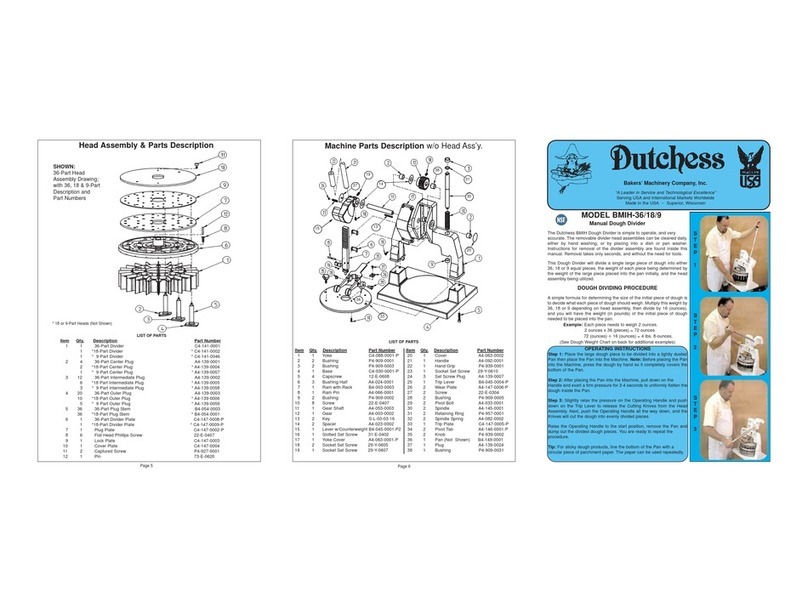WARNING!
Keep hands and clothing clear of all moving parts.
EMERGEN Y STOP
In case of emergency, release rounding lever, flip
power switch to OFF, and raise handle.
ADJUSTMENTS
All adjustments have been made at the factory, however,
readjusting may be required upon installation, and
periodically during use.
2. Motor Belt tension will require tightening as belts
wear and stretch.
WARNING!
Before removing cover, place power switch in
the OFF position and disconnect the machine
from the power source.
To adjust, see Fig. 5. Remove cover from side of base.
With a wrench, loosen locking nut, turn knob clockwise
by hand to tighten belts. The belts should have
approximately 1/16 inch deflection. Retighten the lock
nut and replace the cover. This adjustment must be
tested after being made.
Figure 5
3. Drive Slide adjustment is to stop the crank plate in the
center, when releasing the rounding lever, See Fig.6.
The crank plate must be removed to make this adjust
ment. (To remove crankplate, see instructions on page
10, Item 7) Loosen lock nut and turn set screw counter
clockwise, to allow drive slide to come back to center.
Tighten lock nut. If drive slide is coming back beyond
center, loosen lock nut, turn set screw clockwise,
pushing drive slide to center. Tighten lock nut.
HEAD REMOVAL
To remove the head assembly for cleaning, or for
interchanging with one of the optional head assemblies
of other divisions.
AUTION!
A pallet must be in place on the crank plate when
removing and installing the head assembly.
Note: When properly set, the Stop Rod
Bumper should compress ver slightl
during the ROUNDING PRO ESS.
5
Figure 4
1. Your new Dutchess Divider/Rounder comes
equipped with a "Expandable Pocket" design.
Experimentation will be required to determine the
correct pocket height for each size dough ball. To
increase the pocket height, loosen the locking nut by
turning counter clockwise. Turn the stop rod
clockwise to decrease pocket height (for smaller rolls)
and counter clockwise to increase pocket height (for
larger rolls). Retighten locking nut before rounding by
turning clockwise. See Fig. 4
Figure 6




























